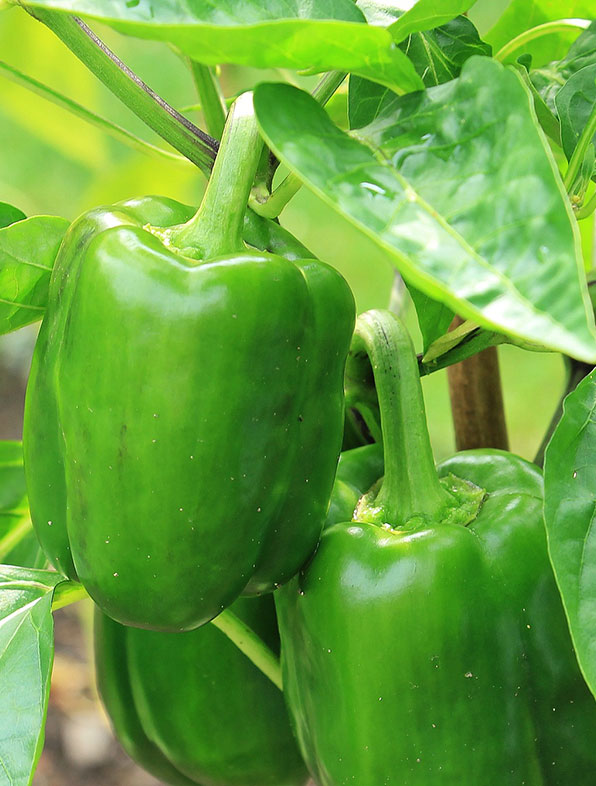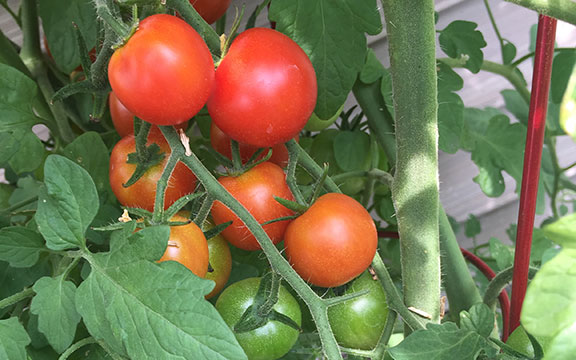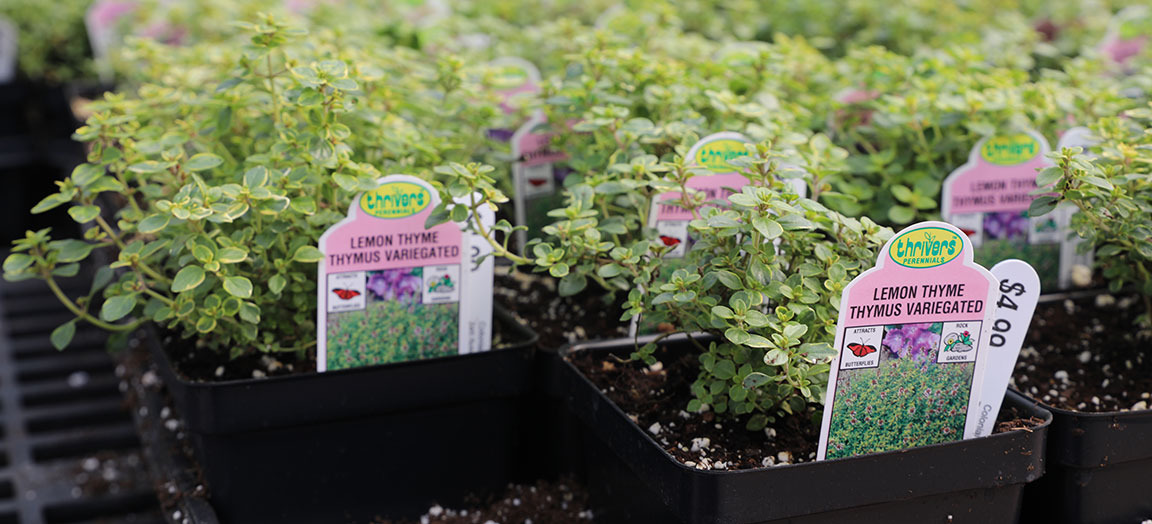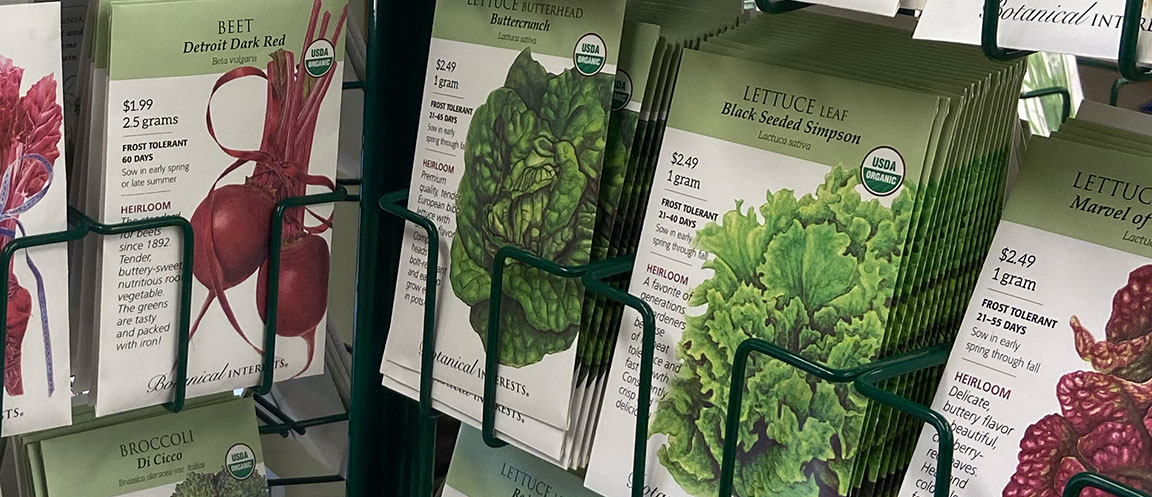FRUITS, VEGGIES & HERBS
There are so many reasons to try food gardening! Here are just a few:
Eat more veggies: Growing plants is a great way to incorporate more veggies into your diet.
More variety: We offer dozens of varieties of tomatoes, peppers, and more! Your typical grocery store veggies are grown for maximum yield and looks rather than taste.
Know What’s In Your Food: Commercially grown foods often use many chemicals to protect their crops from pests. By growing your own food, you know where they come from and can decide how to treat them.
Protect the Earth: Did you know that agriculture is responsible for 10% of the carbon emissions in the US? By growing your own food, you can reduce transport costs as well as minimize the emissions from machinery, pesticides, and fertilizers.

We offer food crops for all growing seasons:
Early Spring and Fall Veggies
The following fruits and veggies prefer planting and/or harvesting during cooler parts of the year. Look for shipments to begin arriving in March. A second, smaller set of shipments will arrive in mid-August for a fall planting. Our inventory changes weekly and is dependent on our growers, but we generally carry all of these plants at some point during the spring.
Arugula, Asparagus, Beets, Broccoli, Cabbage, Celery, Cauliflower, Collards, Endives, Garlic, Kale, Kohlrabi, Leeks, Lettuce, Mizuna, Mustard, Onions, Pak Choi, Peas, Potatoes, Radishes, Strawberries, Swiss Chard


Summer Harvest Fruits and Veggies
The following fruits and veggies typically begin to arrive in early to mid-April with new inventory arriving several times a week until late-May. They are safest to plant after the risk of frost has passed. This list is not exhaustive and inventory changes week to week. Most of these plants are sold as individual plants with some six-packs available. To stay up to date, follow us on social media, subscribe to our newsletter, or stop by the store. During the busy season, we are not able to answer inventory questions over the phone due to staffing limitations.
50+ types of tomatoes, 40+ types of peppers, summer squash (including zucchinis), winter squash (including butternut), 10+ types of eggplants, 10+ types of cucumbers, 10+ types of melons, corn, beans, pumpkins, peas, peanuts, okra, artichokes, tomatillos, sweet potatoes, horseradish, rhubarb, and more!
Herbs
We have one of the widest selection of herbs in the area with many different varieties of your favorite herbs as well as many unique, lesser known varieties. While many gardeners think of herbs solely for cooking and teas, some herbs can be used as companion plants, attract pollinators, or repel mosquitoes. As with our veggies, our selection of herbs varies week to week.

Most Popular: 10+ types of Basil, 6+ types of Rosemary, Parsley, 5+ types of Oregano, Sage, 10+ types of Mint, Cilantro, Lemon Grass, 10+ types of Thyme, Dill, Lavender
More Unique: Chamomile, Chervil, Catnip, Cat Grass, Lovage, Winter Savory, Sorrel/Rumex, Borage, Lemon Verbena, Tarragon, Hyssop, Fennel, Sweet Marjoram, Curry

Fruit Trees and Shrubs:
These fruit-bearing vines, trees, and bushes produce fruits year after year. Please note that some of these types require multiple plants to cross pollinate and produce fruit.
Apples, Blackberries, Blueberries, Cherries, Raspberries, Grapes, Peaches, Pears, Figs, Kiwis, and Serviceberries
We often receive tropical fruit trees in the late spring, including lemons, limes, and oranges. These trees must be brought inside during the winter.
Seeds

For organic options, try growing fruits, veggies, and herbs from our large selection of seeds!
